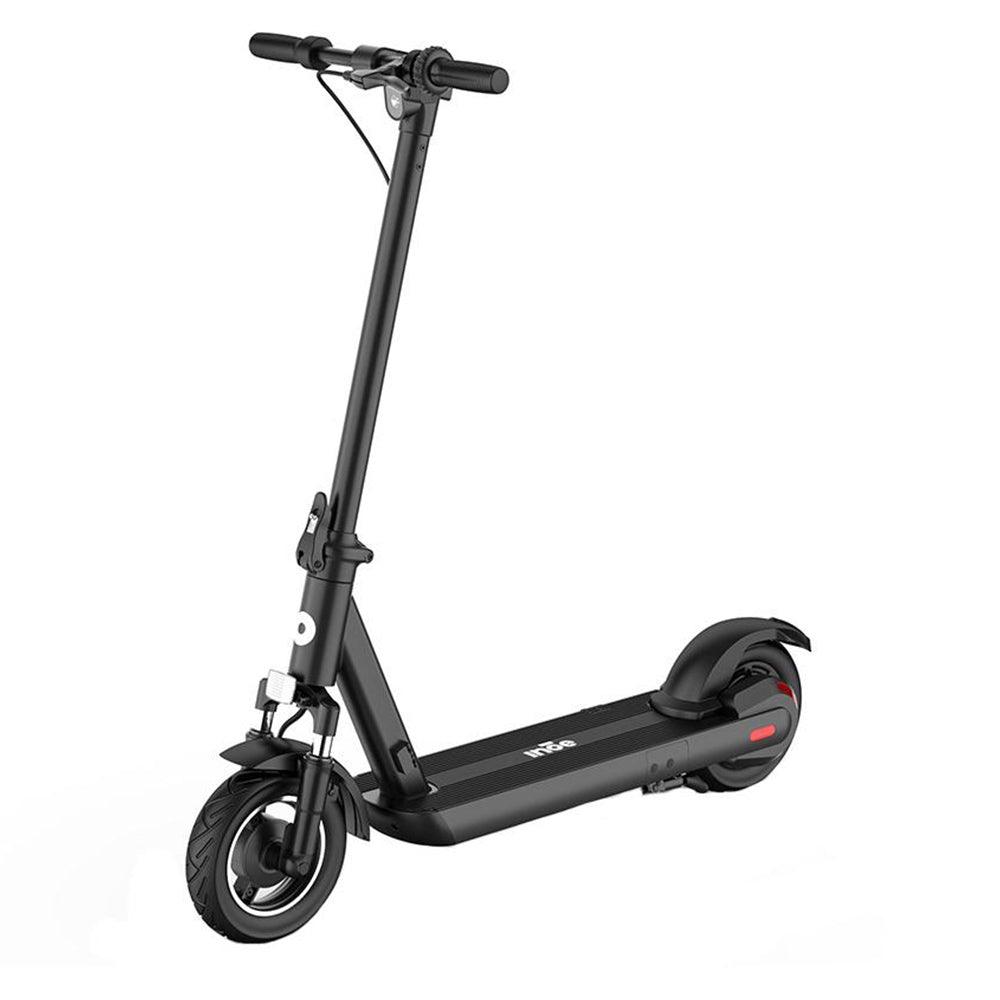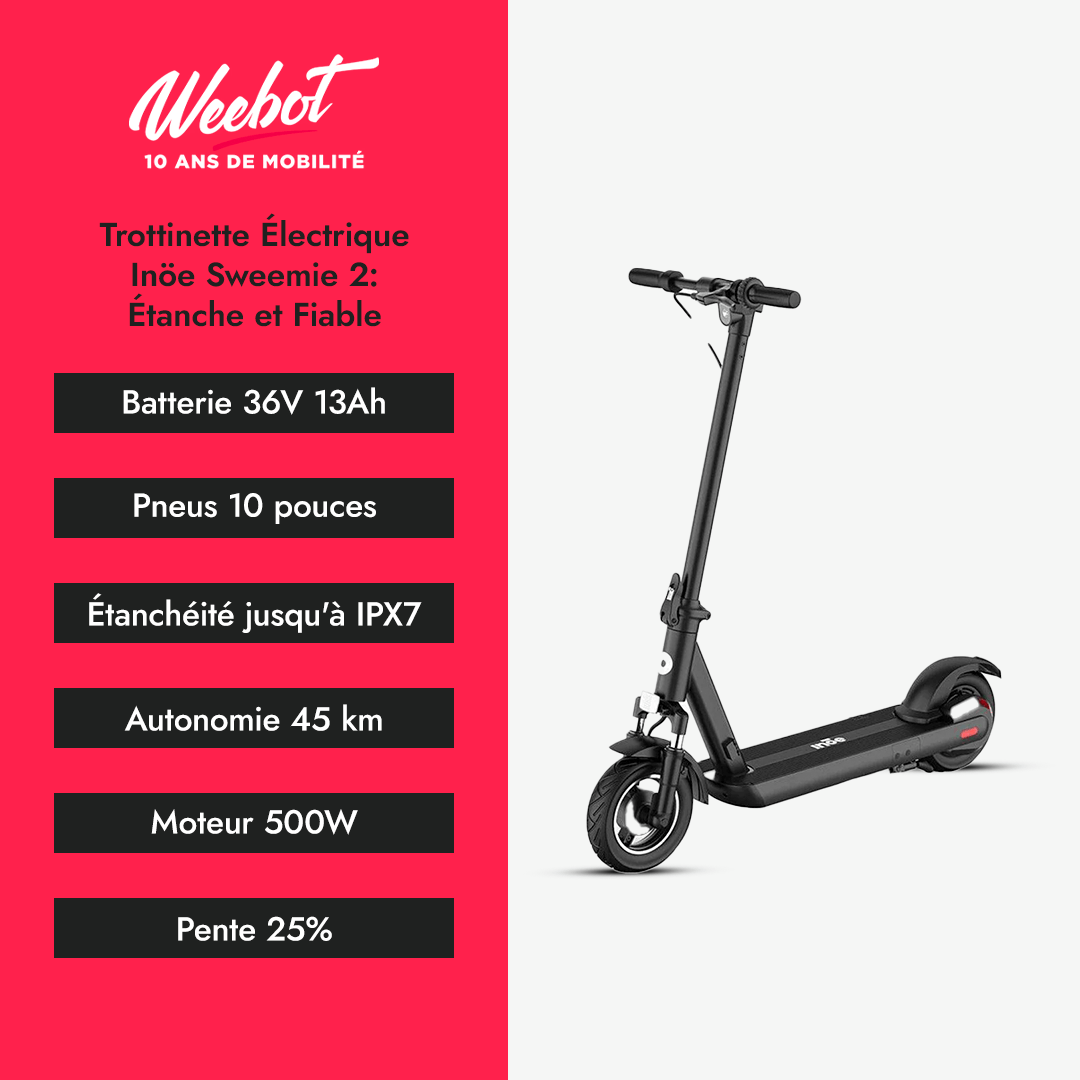Electric scooters must be approved if they exceed 25 km/h. From this speed, these two-wheelers are considered mopeds. In this specific case, you can only use them on private roads. Weebot tells you more.
What is the approval of an electric scooter?

Electric scooters that are not approved are much more numerous on the market because they are naturally limited to 25 km/h. More powerful models must be approved. In other words, it is mandatory to register your vehicle.
To do this, you must go to the prefecture or complete the procedure online on a site designed for this purpose. Once the process has started, you will receive a unique authentication number for your vehicle. This number, recorded in a database, will allow you both to declare and quickly identify your vehicle in case of theft.
Approving an electric scooter: What does the law say?
According to the law, approving your electric scooter may be mandatory depending on the speed level of your two-wheeler. Indeed, if you have a scooter with a top speed of 25 km/h, you will not have to proceed with approval. Scooters at 25 km/h are automatically considered approved according to European standards.
As soon as your vehicle can reach high speeds on private property, it will be considered a moped. In this specific case, the law is very clear: you must start an approval procedure for your electric vehicle under penalty of sanctions.
Among other things, your electric-assisted vehicle will be subject to the Highway Code. Driving a moped can be very dangerous. The speed is higher than on a simple city scooter, so you must be prepared for any eventuality of falls or accidents. As with a motorcycle, wearing a helmet will be mandatory to ride safely, and it will be forbidden to ride on sidewalks during your trips. Once on public transport, your adult scooter must be stored to take up minimal space. For this, we recommend choosing a foldable model. You must also ensure the proper functioning of your components to avoid accidents. Whether it is your brakes, suspensions, shock absorbers, wheels, or handlebars: everything must be in order. It is also important to turn off your electric motor when you are not using your vehicle or when charging it. Keeping these tips and regulations in mind will surely make your life easier as an electric scooter owner.
What are the conditions to meet to approve an electric scooter?

The smooth progress of the approval process will depend on the certification your electric scooter has. In other words, the most important parameter to consider at this point is the manufacturing standard. It applies when it meets European standards.
An electric scooter for which approval is mandatory is marked with a CE label. This label indicates that your two-wheeler is authorized to circulate on French territory and, by extension, on European territory.
What are the steps to follow to approve your electric scooter?
Before investing, to approve your electric scooter you must go through two essential steps:
Registration of your electric scooter
To register your electric scooter, you must go to the Ministry of the Interior to complete this step or carry out the procedure online. To do this, you must present a certificate of conformity that the seller gave you when you purchased your electric scooter. Once this step is completed, an authentication number will be issued to you. It must be fixed on your two-wheeler on a non-removable and fixed part.
Note that if you do not have the certificate, your registration request will be canceled and you will not be able to ride your vehicle.
Insurance for your electric scooter
Insuring your vehicle is essential if it exceeds the authorized speed. It is then considered a moped and must have automobile insurance, not that of a classic electric scooter.
By opting for insurance, you will be guaranteed protection in case of an accident if material and bodily damage must be declared. You can also be covered in case of theft of your electric vehicle!
Rules to follow when riding an electric scooter
When you invest in an electric scooter, you must respect a number of rules. Indeed, like other electric vehicles, scooters are subject to certain laws. Weebot explains everything!
At what age can you ride an electric scooter?
According to the law, you must be at least 12 years old to ride an electric scooter. The electric scooter is a very ergonomic means of transport that you can handle at any age.
You can thus ride legally on public roads. However, as a young rider, we strongly recommend that you equip yourself with a helmet, gloves, elbow pads, and knee pads that will protect you in case of a fall.
Where can you ride an electric scooter?
The law distinguishes between different types of electric scooters. Indeed, the rules differ between motorless and motorized devices. If you ride an electric scooter, here are the rules to follow:
- Motorized devices exceeding 6 km/h must ride on the roadway and are subject to the Highway Code of a classic vehicle. These vehicles are considered vehicles and must be approved.
- Scooters limited to 6 km/h can use sidewalks provided they do not hinder pedestrians. These vehicles generally have a speed similar to that of a pedestrian.
Regarding non-motorized vehicles such as roller skates or skateboards, their use must only be on sidewalks provided they do not disturb the peace of passersby.
Necessary equipment for your safety
When you ride an electric scooter, you expose yourself to many dangers. So, we recommend that you equip yourself with protective gear once your electric scooter is approved. Here is a list of different equipment to have when you are a rider of your electric scooter:
- A helmet: to protect your head in case of impact.
- Gloves: when you fall, your hands are usually the first to be hit; choosing gloves will protect you while gripping your hands on the handlebars.
- Knee pads and elbow pads: you can thus protect your elbows and knees in case of a possible fall.
You are never safe from an accident even when riding carefully. When riding an electric scooter, it is important to dress accordingly, so be sure to wear clothing suitable for two-wheel riding.
What you need to know during a check
To avoid unpleasant surprises during a check, you must be prepared. Here are some habits to adopt to face a check without constraints and stress:
What documents must you present?
As you have understood, electric scooters are subject to the Highway Code like a classic vehicle. In case of a check, you must present the certificate of conformity of your vehicle. This is given to you by the manufacturer of your scooter and proves that your electric vehicle meets standards. Indeed, your two-wheeler must strictly comply with CE standards and current road safety regulations. You must also provide the registration plate accompanied by the registration certificate of your electric scooter.
What sanctions do you risk if you are not compliant?
If you are not compliant, you will be subject to sanctions. For example, in case of absence of registration or certificate of conformity, the law exposes you to a fine. This is a fourth-class fine that can reach 750 euros.
If you do not wear a helmet when riding an electric scooter, you also risk a fine. You may also encounter problems if you ride in a place not suitable for electric scooter riding.
FAQ
How to know if an electric scooter is approved?
If your scooter has a maximum speed of 25 km/h, it does not need to be approved. Indeed, approval is only necessary for electric scooters whose maximum speed exceeds 25 km/h.
What are the obligations for a scooter?
Your two-wheeler must be equipped with an operational lighting and braking system as well as a sound warning device or lights (front and rear). To make yourself more visible, we recommend that you equip yourself with a reflective vest as well as a helmet.
Conclusion
Electric scooters, like any other type of vehicle, are subject to specific legislation. For safety reasons, it is important to have your vehicle approved if it exceeds the speed limit imposed by law. Your scooter will thus have a unique number recorded in a database that will allow you to stay compliant but also to identify your electric vehicle in case of theft.



